ABILENE, Kan. -- Sixty-five years ago on June 6, Soldiers from the 1st Infantry Division joined thousands of their brothers-in-arms to storm the beaches of Normandy, France. Among them was Staff Sgt. Walter D. Ehlers, a 23-year-old that would survive the bullets and bombs of D-Day and three days later carry out actions that warranted a Congressional Medal of Honor, the nation's highest decoration. Ehlers' gallant story started with the dropping of the boat ramp. He and his unit were forced to wade about 100 yards through neck to waist deep water to reach the body ridden beach because their boat hit a sandbar and couldn't go any further. Though he and his men, part of 1st Battalion, 18th Infantry Regiment, could hear the shelling and constant machine gun fire on the boat, it wasn't until they reached the shore that they came to know the chaos and confusion they had been thrown into. "We didn't think it was that bad. We didn't think we had been receiving that many casualties. Bodies were lying around us," Ehlers said, explaining that his unit was supposed to be a part of the second wave of troops to storm the beach but were ordered into combat early to support fellow soldiers who were pinned down. "The first thing guys wanted to do was dig in but I said, 'Guys you can't do that, you'll die here.'" After getting his men to follow him again, Ehlers first ran looked for the beach master to ask which direction they should go to join up with other 1st Infantry Division troops. "Then I heard someone say on the beach, 'Come on 16, lets go!' and then I heard someone else yell 'Come on 16 lets go!' and I thought, 'My God, they don't know what's going on around here' and I didn't know which 16 was calling," Ehlers laughed slightly, describing further confusion with his job to take a reconnaissance patrol to an inland town when the second wave of troops hit the beach, a landing Ehlers knew he was hours ahead of. The indecision on which direction to go prompted Ehlers to take his squad straight into the beach. "I got my squad to follow me up and we came to the end of the path with a roll of wire at the end of it that hadn't been blown," he said, explaining they took cover and came across two torpedo men who reported they were pinned down by a sniper. Ehlers said he knew where the enemy trenches were and offered himself and his squad to fire a barrage of bullets in the enemy's direction if the two torpedo men would blow the wire. "We started firing that way and one guy got killed because of the sniper but the other guy got through and blew the wire," he continued. The actions of both torpedo men allowed Ehlers and his squad access through the wire, where they were confronted with a mine field that they had to run through to finally reach and enter the German trenches. "We captured four of them, sent them down for interrogation and then went and captured a pillbox from behind. We were killing the Germans or they were running from us," Ehlers stated, knowing that day he and his squad wouldn't achieve their objective, but still fought on until the beaches were taken. The actions of that day didn't come from planning, Ehlers noted, explaining to audience members at a Veteran's Panel held during the 65th D-Day Anniversary at the Eisenhower Presidential Library and Museum Visitors Center in Abilene, Kan., that he was put on a beach and he had to fight his way off of it to survive. "I had a job to do and that's what I was doing, my job." His job wasn't yet over, though. That first night, Ehlers' platoon came under fire from enemy forces from the parameter of camp. The platoon leader ordered Ehlers and his squad to go after the Germans, who fired upon the encampment, but they couldn't effectively navigate after them because it was so dark and they couldn't see. They didn't return empty handed, though. The squad had stumbled across a briefcase which contained the locations of machine gun nests, pill boxes and other defenses that made up the German's second line of defense should they lose the beaches of Normandy. Those plans led to actions June 9 and 10 that would later earn Ehlers his Congressional Medal of Honor. In those two days, Ehlers led his unit in an attack against German forces, single handedly defeated several enemy machine gun nests, covered his platoon's withdrawal after they came under heavy fire, carried a wounded rifleman to safety and continued to lead his Soldiers despite a bullet to his side. The wound came as a result of trying to cover his platoon's withdrawal from an ambush that came from the right, left and front on June 10, 1944. "The company commander asked us to withdraw so we could do a different kind of attack but I knew if we turned around and withdrew, we would all probably be shot in the back ... so I went up on a mound and started firing in a semi-circle and an automatic rifleman came up with me," Ehlers said. It was when they had nearly withdrawn themselves back to the retreating platoon that a bullet hit Ehlers with such force that it knocked him down and spun him around onto his back. "I saw a German in the hedgerow and I shot him, when I saw my automatic rifleman up there laying on the field," he said, explaining that when he got up to the man he found the rifleman had been shot in the leg and wrist which made walking and carrying his rifle impossible. Still under fire, Ehlers took his rifleman's arm over his own shoulder and limped back to the medics only to turn around and go back out for the man's automatic rifle. "That was the only automatic rifle we had and I knew we had to have one," Ehlers said. After returning to the relative safety of his platoon and seeing the medics begin packing up to leave Ehlers asked his commander if the medics should dress his own wound before departing "They took off my pack and saw where the bullet had gone in through my side, hit a rib, went through the muscle and into the pack and hit a bar of soap. The bar of soap turned the bullet and it came straight out the back of the pack. It looked like I had been shot clear through," Ehlers stated, later refusing orders to be medevaced for recovery and stayed on to continue to lead his unit. "It was the furthest from my mind (to receive a medal). I had no idea. I was only doing my job, what I was supposed to be doing," Ehlers stated simply.
Medal of Honor veteran recounts Normandy
By Jordan Chapman, 1st Inf. Div. Public AffairsJune 10, 2009

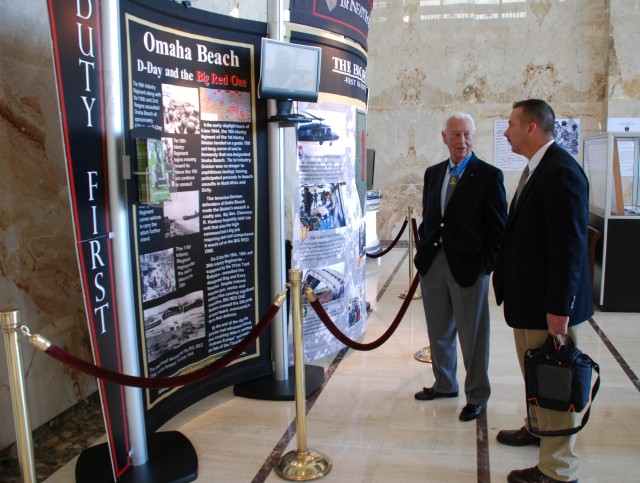
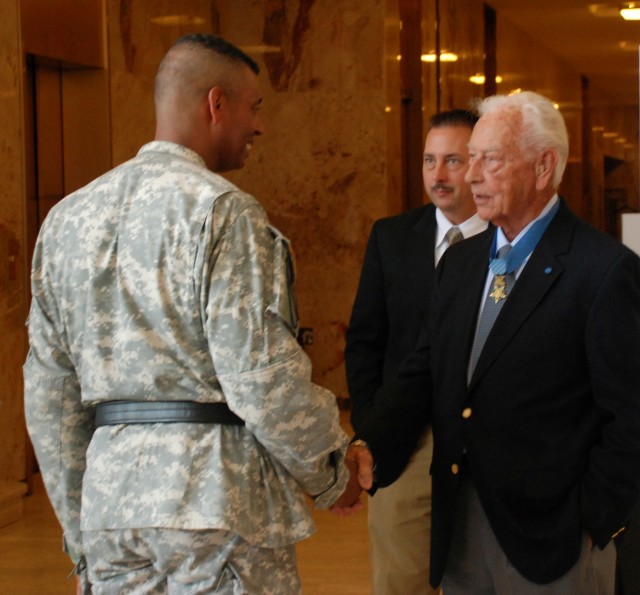
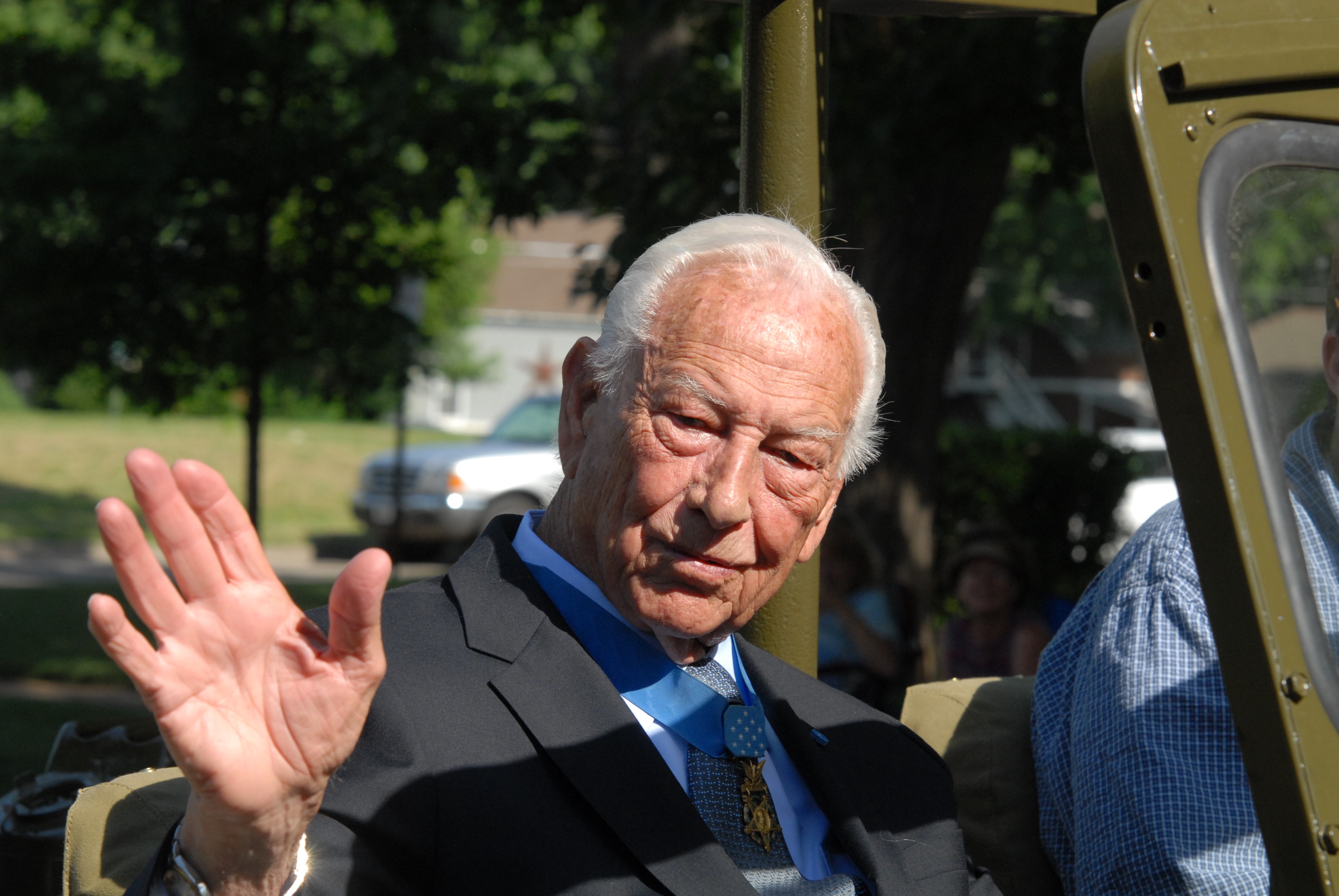
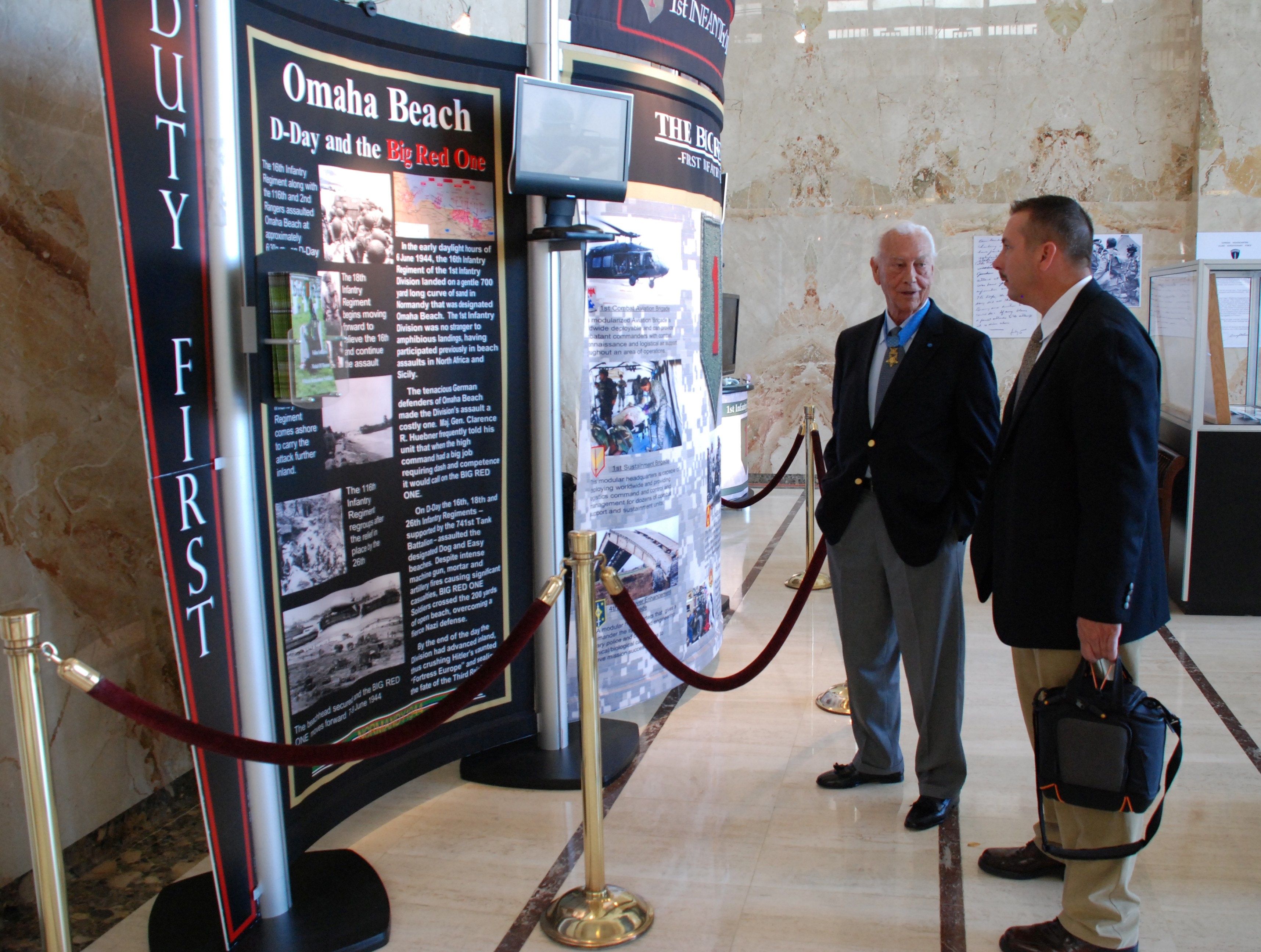
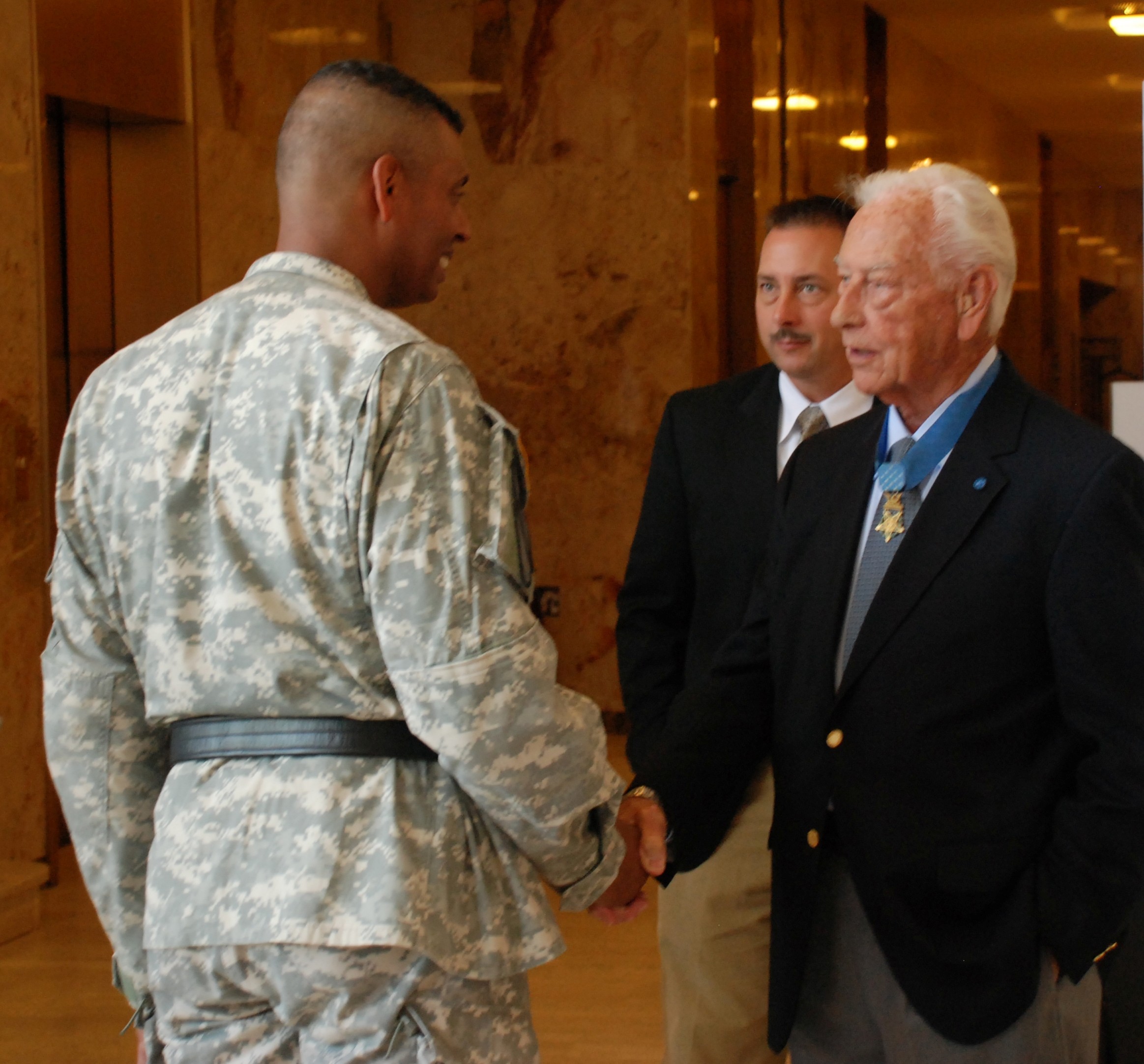
Social Sharing